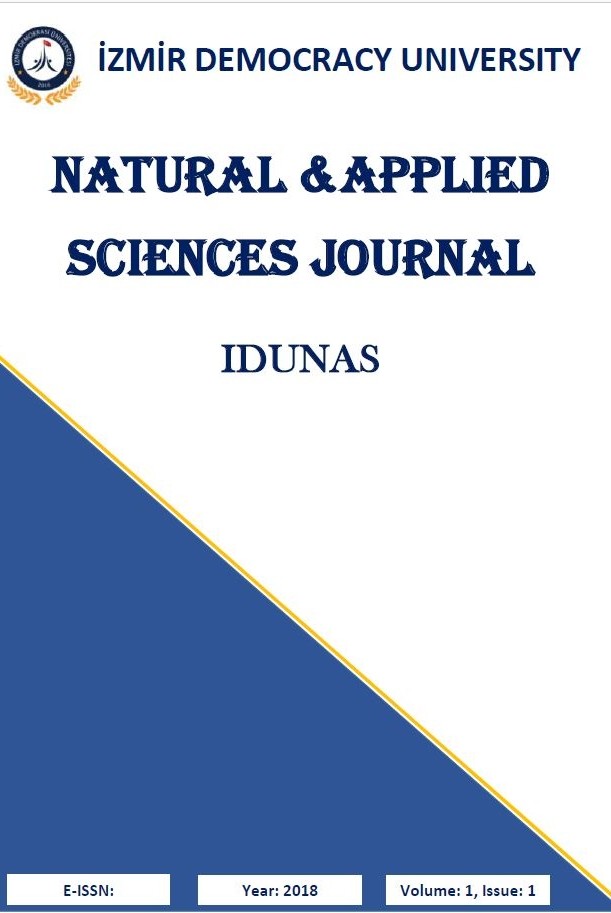Comparison of CNNs and SVM for Detection of Activation in Malaria Cell Images
Comparison of CNNs and SVM for Detection of Activation in Malaria Cell Images
classification, CNN, SVM, Pattern recognition,
___
- Ahirwar, N., Pattnaik, S., & Acharya, B. (2012). Advanced image analysis based system for automatic detection and classification of malarial parasite in blood images. International Journal of Information Technology and Knowledge Management, 5(1), 59-64.
- Bektaş, J., Ibrikci, T.( 2017, February). Hybrid classification procedure using SVM with LR on two distinctive datasets, In Proceedings of the 6th International Conference on Software and Computer Applications on (pp. 68-71). Bangkok, Thailand, ACM.
- Das, D. K., Ghosh, M., Pal, M., Maiti, A. K., & Chakraborty, C. (2013). Machine learning approach for automated screening of malaria parasite using light microscopic images, Micron, 45, 97-106.
- Díaz, G., González, F. A., & Romero, E. (2009). A semi-automatic method for quantification and classification of erythrocytes infected with malaria parasites in microscopic images. Journal of Biomedical Informatics, 42(2), 296-307.
- Dong, Y., Jiang, Z., Shen, H., Pan, W. D., Williams, L. A., Reddy, V. V., et.al. (2017, February). Evaluations of deep convolutional neural networks for automatic identification of malaria infected cells, In 2017 IEEE EMBS International Conference on Biomedical & Health Informatics (BHI) on (pp. 101-104). Orlando, FL, USA, IEEE.
- Krizhevsky, A., Sutskever, I., Hinton, G. E. (2012). Imagenet classification with deep convolutional neural networks, In Advances in neural information processing systems, 1097-1105.
- Kurtuldu, H., Oktan, A. D., Candan, H., & Cihangiroğlu, B. S. (2018). Red Blood Cell Analysis by Hyperspectral Imaging. Izmir Democracy University Natural and Applied Sciences Journal, 1(2), 1-7.
- LeCun, Y., Kavukcuoglu, K., Farabet, C.(May 2010) Convolutional networks and applications in vision, In Proceedings of 2010 IEEE International Symposium on Circuits and Systems, Paris, France, pp. 253-256, IEEE.
- Liang, Z., Powell, A., Ersoy, I., Poostchi, M., Silamut, K., Palaniappan, K., et.al.(December 2016). CNN-based image analysis for malaria diagnosis, In 2016 IEEE International Conference on Bioinformatics and Biomedicine (BIBM) on (pp. 493-496). Shenzhen, China, IEEE.
- Moon, S., Lee, S., Kim, H., Freitas-Junior, L. H., Kang, M., Ayong, L., & Hansen, M. A. (2013). An image analysis algorithm for malaria parasite stage classification and viability quantification. PloS one, 8(4), e61812.
- Nugroho, H. A., Akbar, S. A., & Murhandarwati, E. E. H. (October 2015). Feature extraction and classification for detection malaria parasites in thin blood smear, In 2015 2nd International Conference on Information Technology, Computer, and Electrical Engineering (ICITACEE) on (pp.197-201), Indonesia, IEEE.
- Poostchi, M., Silamut, K., Maude, R. J., Jaeger, S., Thoma, G. (2018). Image analysis and machine learning for detecting malaria, Translational Research, 194, 36-55.Prasad, K., Winter, J., Bhat, U. M., Acharya, R. V., & Prabhu, G. K. (2012). Image analysis approach for development of a decision support system for detection of malaria parasites in thin blood smear images. Journal of digital imaging, 25(4), 542-549.
- Ring, M., Eskofier, B. M. (2016). An approximation of the Gaussian RBF kernel for efficient classification with SVMs, Pattern Recognition Letters, 84, 107-113.U.S. National Library of MedicineLister Hill National Center for Biomedical Communications.(2019).(https://lhncbc.nlm.nih.gov/publication/pub9932).
- World Health Organisation. (2019). MalariaDiagnostic testing. “https://www.who.int/malaria/areas/diagnosis/en/
- ISSN: 2645-9000
- Başlangıç: 2018
- Yayıncı: İzmir Demokrasi Üniversitesi
Mercy BAMİGBOYE, İkechukwu EJİDİKE
Fatih SENTURK, Soner CAKMAK, Goknur GULER OZTURK
Mercy BAMİGBOYE, İkechukwu EJİDİKE
Artificial Photosynthesis with Titania Photocatalysts
Hüsnü Arda YURTSEVER, Muhsin ÇİFTÇİOĞLU
Comparison of CNNs and SVM for Detection of Activation in Malaria Cell Images
